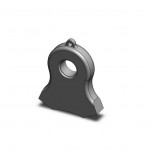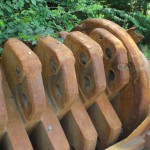There are hammer patterns to fit every type rotor and feedstock situation. The goal is to get effective production levels while extending the life of your wear parts. Shredder hammer patterns can play a key role in accomplishing these goals.
Spider rotors can have anywhere from 26 to 30 plus hammer positions. Although there are this  many potential positions, in the majority of applications it is best in terms of performance and reduced wear parts cost, to use fewer hammers to achieve your goal. There are not many patterns for a typical 4 arm spider rotor. You can reduce wear parts costs by dropping the number working hammers, using worn out hammers or pin protectors in the dropped positions. Start, with 2, then 4, dropped working hammers and look at tons per hour and separation.
many potential positions, in the majority of applications it is best in terms of performance and reduced wear parts cost, to use fewer hammers to achieve your goal. There are not many patterns for a typical 4 arm spider rotor. You can reduce wear parts costs by dropping the number working hammers, using worn out hammers or pin protectors in the dropped positions. Start, with 2, then 4, dropped working hammers and look at tons per hour and separation.
Reducing the hammer count in a spider rotor has produced mixed results. Some machines achieved notable production gains, but often produced less dense scrap. A density change indicates other factors were likely involved that were not controlled or noted. Maintain grate size, monitor shred density and non ferrous recovery rates to be sure where your gains come from. Finding your ‘sweet spot” requires a little experimentation and measurement. If you can maintain density and recovery and use less new hammers, you’re moving in the right direction. Whatever your combination of working hammers, be sure to weigh and balance your rows. Spider rotors demand it.

Next time, disk rotors.



